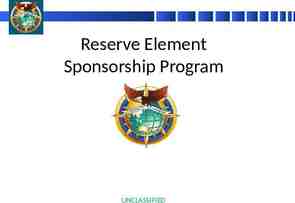CYANIDE TRAINING Proper care and handling of
17 Slides3.14 MB
CYANIDE TRAINING Proper care and handling of sodium-carbon-nitrogen compounds XXXX Gold Mining Company
CYANIDE TRAINING Why the need for this Training? MSHA Safety & Health Training. To comply with the International Cyanide Management Code. To Comply with the XXXX Cyanide Policy
What is Cyanide? Chemical Name : Sodium Cyanide Chemical Symbol: NaCN “Better” Chemical Name: Sodium Carbon Nitrogen
CYANIDE SAFETY USES The use of cyanide for the extraction of gold is only one of the many industrial uses of cyanide, accounting for less than 20% of worldwide hydrogen cyanide production. The remaining 80% is used in a variety of processes including the production of plastics (such as acrylics and nylon) and pharmaceuticals (ibuprofen and naproxen), processing of food (decaffeination of coffee and as an anti-caking additive in table salt), and for electroplating and hardening of steel.
Process Description 1. NaCN & NaOH (sodium hydroxide) are added to Barren Solution in ADR Plant. 2. Barren Solution is pumped to the Leach Pad. 3. Barren Solution Extracts Gold from Leach Pad Becoming Pregnant Solution. LEACH PAD Preg Solution 4. Preg Solution is Collected from Leach Pad and Pumped Back to ADR Plant were the Gold is PREG Removed, with other metals. PUMPS Barren Solution ADR PLANT
Cyanide Safety Potential Areas for Exposure Fast Acting Poison Routes of Entry HCN Exposure Limits Symptoms of Cyanide Poisoning First Aid Procedures
Cyanide Safety Potential Areas for Exposure ADR Plant Lab Leach Pad
Cyanide Safety Personal Protective Equipment What is required? – Full PPE to Mix NaCN or perform maintenance work in NaCN storage areas. – Safety Glasses In All Areas. - No Acids Near Cyanide.
Cyanide Safety Fast Acting Poison - if Exposure is to high levels - usually as HCN – Cyanide Prevents Cellular Respiration. Mainly in the Brain & Heart! – HCN Gas, Cyanide Dust or Solution are all Dangerous. – Cyanide poisoning is recoverable if treatment is administered quickly. Normally in 3-4 minutes! Therefore, responders must work quickly!
Cyanide Safety Routes of Entry – Skin – Eyes – Ingestion – Inhalation NO EATING, DRINKING, OR SMOKING AROUND CYANIDE WORKING AREAS!!
Cyanide Safety Barren Solution Characteristics pH 10.0 NaCN Concentration 0.200 lb/ton Lethal Ingested Dosages at this Concentration*: – 150 pound person 2.5 gallons – 200 pound person 3.5 gallons – 250 pound person 4.5 gallons * Numbers are based off of LD50 of 15 mg/kg in Rats.
Cyanide Safety HCN Production The Higher the pH of the Solution the Less HCN Produced. DO NOT Mix Acid and Cyanide!!!
Cyanide Safety HCN Exposure – Current Limits 10 ppm on an 8 hour TWA 5 ppm on a 12 hour TWA – New Guidance for PPE 4.7 ppm Maximum* * Recommended by the ACGIH (American Conference of Governmental Industrial Hygienists) but not yet approved. Suggested in International Code.
Cyanide Safety HCN Exposure – Effects 2-5 ppm Odor threshold 4.7 ppm Maximum Exposure 20-40 ppm Slight symptoms after several hours 45-54 ppm Tolerated for ½ to 1 hour without significant immediate or delayed effects 100-200 ppm Fatal within ½ to 1 hour 300 ppm Rapidly fatal (if no treatment)
Cyanide Safety Symptoms of Cyanide Poisoning –Early Symptoms Reddening of the eyes/skin Nausea Headache –Delayed Symptoms Irritation of the throat Salivation Giddiness Weakness of the arms and legs Difficulty breathing Palpitations Numbness Convulsions Collapse
Cyanide Safety First Aid Procedures – Sound Alarm. Protect Self with PPE. Remove victim from contamination, also remove contaminated clothing from the victim. Be careful of cross contamination! – If no symptoms are evident: No treatment is necessary. Just watch for symptoms to develop. – If Conscious but symptoms are evident: Give Oxygen. – If Consciousness is impaired or the victim is unconscious: Give Oxygen and Amyl Nitrite – If not breathing: Give Oxygen and Amyl Nitrite immediately by means of a positive pressure respirator (artificial respiration).
Cyanide Safety First Aid Procedures Ingestion – Remove victim from contamination. Be careful of cross contamination! – If Conscious: Give Activated Charcoal. – If Consciousness is impaired or the victim is unconscious: DO NOT give Activated Charcoal!!






















